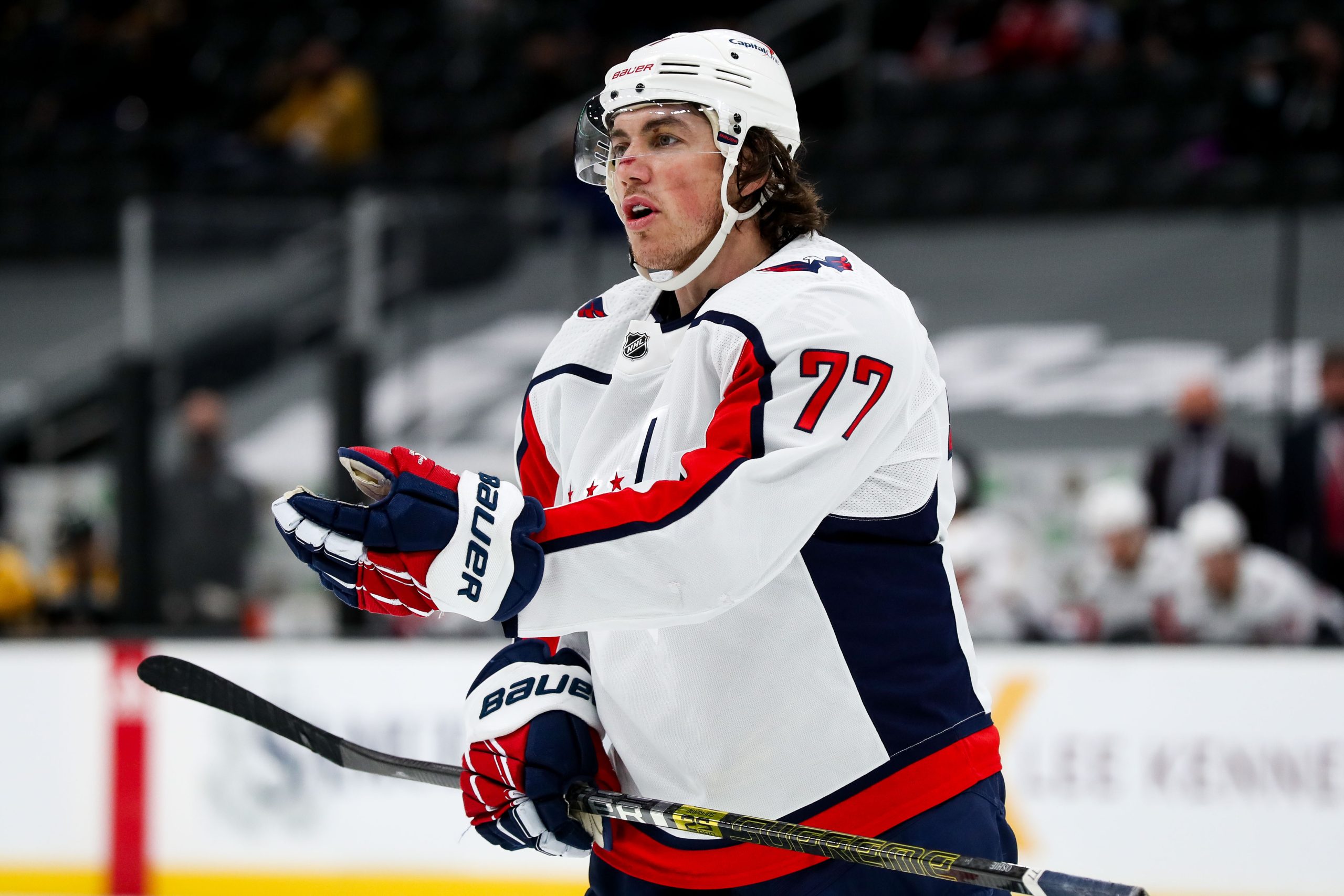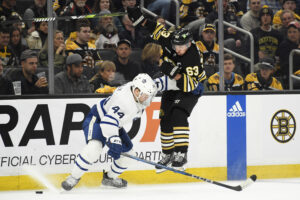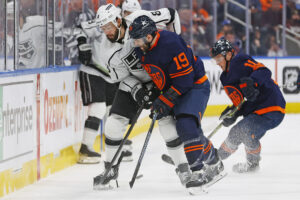Main Photo: Paul Rutherford-USA TODAY Sports
NHL player development seems to always result in more questions than answers. How likely is it for a top pick to pan out? What makes a player a “steal”? Last Word On Hockey will be starting a new series on how to properly develop prospects from all different spots throughout the draft. This week’s piece involves draft picks in the back-half of the first round and how they were used early in their careers.
NHL Player Development Of First-Round Picks
In the span of 2005 through 2015, there were 84 total selections made between 16th overall and 30th overall on forwards playing in North America. Looking at all 84 forwards, they were split into different categories. Those categories were “Forwards Deemed NHL-Ready and Brought In Immediately When Ready,” “Forwards Near NHL-Ready and Brought In Immediately When Near-Ready,” “Forwards Rushed Slightly,” “Forwards Rushed,” “Forwards Forced,” “A Little Patience,” “Patience,” and “Too Much Patience.”
There were four forwards who fell into the seventh category, “too much patience,” on the list. Of those four players, one made their NHL impact in their DY+4 season. That player was TJ Oshie.
In this piece, we will be using stats from eliteprospects (raw stats) and hockey-reference (ice time). Additionally, the analytics we are using are as follows: even-strength offence goals above replacement (EVO), even-strength defence goals above replacement (EVD), wins above replacement (WAR) and goals above replacement (GAR). Those analytics are from evolving-hockey (subscription required).
NHL Player Development Of TJ Oshie
TJ Oshie, drafted 24th overall by the St Louis Blues in the 2005 NHL draft, came out of Warroad High School in Minnesota. Playing high school hockey for Warroad, he scored 43 goals and 42 assists for 85 points in 31 games, for 2.742 points per game, in his DY-1 season. That ranked first amongst the aforementioned 84 forwards in DY-1 production. The following season, he upped his production in the form of 38 goals and 62 assists for 100 points in 31 games, for 3.226 points per game. That ranked first yet again amongst those same 84 forwards in DY production, albeit in a weaker league than most.
After being drafted, Oshie would take his talents to the NCAA. There he played for the University of North Dakota, for three seasons. In his freshman season, Oshie scored 24 goals and 21 assists for 45 points in 44 games, for 1.023 points per game. That ranked 45th out of the 82 forwards still outside the NHL in DY+1 production. As a sophomore, Oshie scored 17 goals and 35 assists for 52 points in 43 games, for 1.209 points per game. That ranked 20th amongst the 70 forwards still outside of the NHL in DY+2 production. In his final NCAA season, Oshie scored 18 goals and 27 assists for 45 points in 42 games, for 1.071 points per game. That ranked second amongst the 46 forwards still outside the NHL in DY+3 production.
How Oshie Was Used
TJ Oshie, after performing at a high level in all three NCAA seasons, would get his NHL shot. Playing in 57 games with the Blues, he averaged 16:35 time on ice per game. As a rookie, that is a big role. With that, he scored 14 goals and 25 assists for 39 points, a respectable start to his NHL career. Analytically, he was just as impressive. His EVO (4.9) and EVD (3.2) were both exceptional for a rookie, while his WAR (1.8) and GAR (9.8) were also very impressive.
With a successful rookie season behind him, Oshie entered his second season with higher expectations. Playing in 76 games, he was given a bigger role, averaging 18:19 per game. In that top-six role, Oshie produced 18 goals and 30 assists for 48 points. Analytically, he improved his game even further. His EVO (8.3) and EVD (3.7) were very strong, and an indication that he was a very capable top-six forward at a young age. His overall game, shown by his WAR (2.4) and GAR (13.3), began inching towards elite status, though they were still a ways away.
Oshie Takes Small Step Back In Year Three
Expectations continued to mount, as Oshie would play just 49 games, but averaged 19:11 per game, essentially first line minutes. With that, he again produced modestly, with 11 goals and 22 assists for 33 points. His analytics showed a little bit more of a step backwards than what his raw production indicated. His EVO (4.7) and EVD (0.4) both were new career-lows. With that, his WAR (1.9) and GAR (10.8) both dropped, but remained really strong.
With three successful seasons already in his career, it was clear he was headed onto a path of NHL success for his career. Since that third season in 2010-11, Oshie would remain with the Blues for the next four seasons. In that span, he played 261 games, with 66 goals and 123 assists for 189 points. He averaged about 20 goals and 50-60 points per year in that span of time with the Blues. But, in 2015-16, he would join the Washington Capitals, where he remains today. So far, he has played 495 games, and counting, in eight years with Washington. He has scored 172 goals and 171 assists for 343 points. Again averaging about 25 goals and 50 or so points with the Captials.
Overall NHL Player Development Of TJ Oshie
There aren’t many players who can be argued, in the 2005 class that was taken after Oshie, who would have been the better choice, in hindsight. The Blues took a big risk, swinging on a player who dominated high school in the first round. But it worked out, as he played at a high level in the college ranks. They also didn’t mess up once he graduated to the professional ranks. They slotted him right into a top role with the team. Then, they steadily gave him a raise in ice time year-to-year early on. Player development isn’t perfect, but that’s as close as it can get.
But, looking back, some other good options for the Blues were there. Those players included Andrew Cogliano (25th overall), James Neal (33rd) and Paul Stastny (44th) for forwards, and Matt Niskanen (28th) and Marc-Edouard Vlasic (35th). Only Stastny has more points, while Stastny, Vlasic, Niskanen and Cogliano played more games. Can’t argue at all with who the Blues got in TJ Oshie. And the Capitals are surely happy with the way he turned out for them as well.
Junior league stats via Elite Prospects, NHL stats via Hockey Reference, NHL analytics via Evolving Hockey






